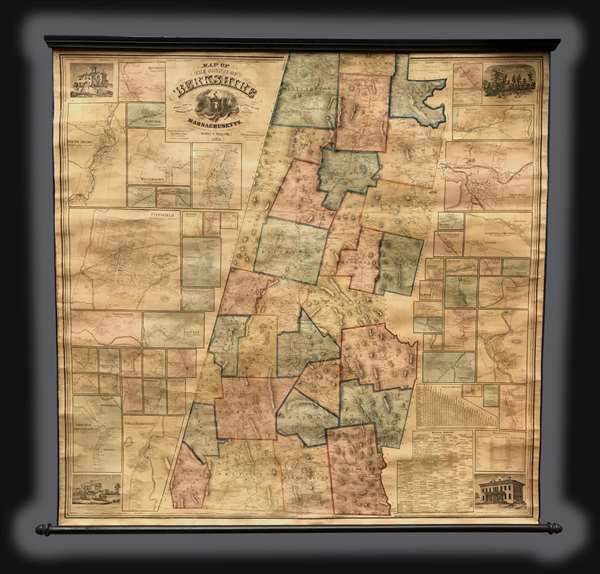
This item below is out of stock, but another example (left) is available. To view the available item, click "Details."
Details
1858 Walling Wall Map of Berkshire County, Massachusetts (the Berkshires)
$3,000.00
1858 Walling Wall Map of Berkshire County, Massachusetts (the Berkshires)
BerkshireCountyMA-walling-1858
Title
1858 (dated) 62 x 61 in (157.48 x 154.94 cm) 1 : 50688
Description
Berkshire County is known throughout the East Coast and the country as a haven for artists. It is the summer home of the Boston Symphony Orchestra. The celebrated music venue Tanglewood, which is located in the towns of Lenox and Stockbridge, is home to three music schools and hosts the Festival of Contemporary Music as well as numerous other concerts and performances. The Massachusetts Museum of Contemporary Art (MASS MoCA) is a museum located in North Adams and is one of the largest centers for contemporary visual art and performing arts in the United States. In the 19th century, Berkshire County became popular with the nation's elite, where they built what they called 'cottages'. Today, some of these buildings have been burned or torn down, while others have been converted into prep schools, bed and breakfasts, and historic sites.
This map was created and printed by Henry Francis Walling and published by Smith, Gallup and Company in 1858.
Cartographer
Henry Francis Walling (June 11, 1825 - April 8, 1889) was an American civil engineer, cartographer, surveyor, and map publisher active from the middle to late 19th century. Walling was born in Providence, Rhode Island. He studied/worked at the Providence Athenaeum before discovering a talent for mathematics and surveying. Walling took a position with Samuel Barrett Cushing (1846 - 1888), a Providence-based civil engineer with whom he issued in 1846 a revision of James Steven's Topographical Map of the State of Rhode-Island. Walling established himself independently around 1850 and immediately began preparing a series of town plans focusing on Bristol County, near Providence. Buoyed by widespread interest in his plans, Walling expanded his operations to Massachusetts, where, by 1857, he had produced no less than 50 town plans. Apparently, Walling's business model involved a contract with town officials to produce a certain number of maps, after which he acquired the right to print and sell additional copies on his own account. This work eventually led to Walling's appointment as Massachusetts "Superintendent of the State Map", a designation that began appearing on his maps around 1855. While Walling's work focused heavily on city and county maps, he successfully published three scarce state maps: Maine, Vermont, and Rhode Island. In 1856, Walling relocated his headquarters to New York City, where he had better access to quality lithographers. The Civil War (1861 - 1865) proved difficult for Walling, and diminished sales may have forced him into a partnership with Ormando W. Gray, with whom he published numerous state, county, and national atlases in the 1860s and 1870s. Around 1880, Walling took a post with the U.S. Coast Survey, with whom he worked on various charts until requesting a transfer in 1883 to the newly formed U.S. Geological Survey. Walling remained with the Geological Survey until his untimely death of a heart attack in April 1889. More by this mapmaker...

